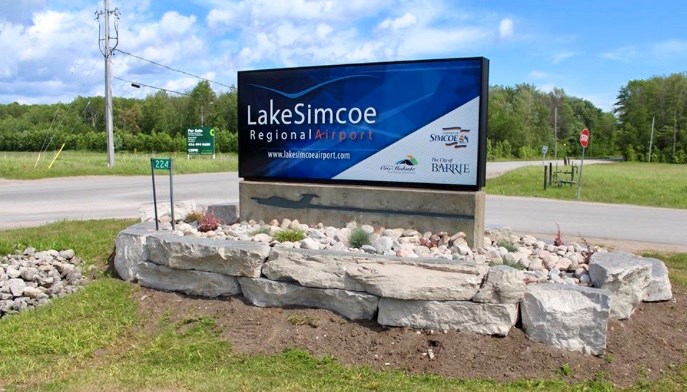Barrie city councillors are on board with Lake Simcoe Regional Airport (LSRA) officials for a potential $66-million expansion of the Oro-Medonte Township facility.
LSRA officials made a presentation to city council earlier this month, gauging support for a possible three-phase expansion at the Line 7 facility.
On Monday night, city councillors endorsed, in principle, the airport’s strategic plan. Invest Barrie and staff from the city’s finance department will review the plan and report back on the business case and recommendations for
funding alternatives, such as securing infrastructure funding from other levels of government.
The City of Barrie is the airport’s majority shareholder, at 60%, and shares ownership with Simcoe County and Oro-Medonte Township.
With Toronto Pearson International Airport transitioning to a “mega-hub” focused on long-range, wide-bodied aircraft, LSRA officials say smaller carriers are being asked to find new operational facilities.
To take on additional such air traffic, several upgrades would be needed at the Oro-Medonte airport, including a longer runway, better navigational aids and perhaps even a new terminal building.
Other municipalities are also looking at expanding their airports in hopes of taking on some of the air traffic that will be redirected from Pearson in the coming years.
LSRA is already home to corporate air traffic, such as the OPP and Hydro One, but the expansion possibilities would allow the facility to accept passenger and cargo planes.
At a combined cost of almost $66 million, LSRA expansion would be phased in and based on demand.
The $27.5-million first phase would include lengthening and widening LSRA’s runway, land acquisition, enhancement of electronic and visual aids, including installation of an approach lighting system, as well as certification and zoning changes.
The second phase, at a cost of $350,000, would bolster the air-service business case through an economic impact study and investigate air-service incentives while also looking at a new/expanded air terminal in the third phase.
The $38-million third phase would include an air terminal building, ground-side infrastructure as well as expanded services and utilities to the terminal.



